The Enigmatic Painter of Delft
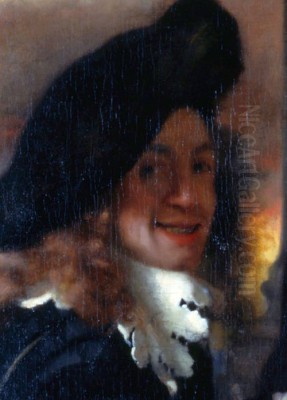
Johannes Vermeer, baptized in Delft on October 31, 1632, and buried there on December 15, 1675, stands as one of the most revered and intriguing figures of the Dutch Golden Age. Known commonly as Jan Vermeer, his full name appears in records as Johannes van der Meer or Johannes van der Meer van Delft, the suffix clearly indicating his lifelong association with the city of his birth. Despite his current fame, Vermeer was relatively obscure during his lifetime and for nearly two centuries after his death, leaving behind a remarkably small body of work – only around 35 paintings are confidently attributed to him today. His art, characterized by luminous interiors, serene domestic scenes, and an unparalleled mastery of light and color, offers a quiet, intimate glimpse into 17th-century Dutch life, securing his place alongside Rembrandt van Rijn as a titan of the era.
Vermeer's life remains shrouded in a degree of mystery, pieced together from scarce archival documents. He spent his entire existence in Delft, a prosperous city known for its breweries, pottery (Delftware), and thriving artistic community. His relative anonymity during his life and the subsequent centuries, combined with the intimate, almost voyeuristic quality of his paintings, has earned him the moniker "The Sphinx of Delft." His rediscovery in the late 19th century sparked immense interest, and his reputation has only grown since, captivating audiences with the subtle beauty and technical brilliance embedded in his tranquil scenes.
Early Life and Artistic Formation
Johannes Vermeer was born into a middle-class family in Delft. His father, Reijnier Janszoon, initially worked as a silk weaver (specifically, a caffa worker) and later became an innkeeper and art dealer, registering with the Delft Guild of Saint Luke in 1631. This background likely provided the young Vermeer with early exposure to the art world, surrounded by paintings traded or displayed at his father's inn, the "Mechelen," located on the Markt square. His mother, Digna Baltens, came from Antwerp. Johannes was the second child and only son.
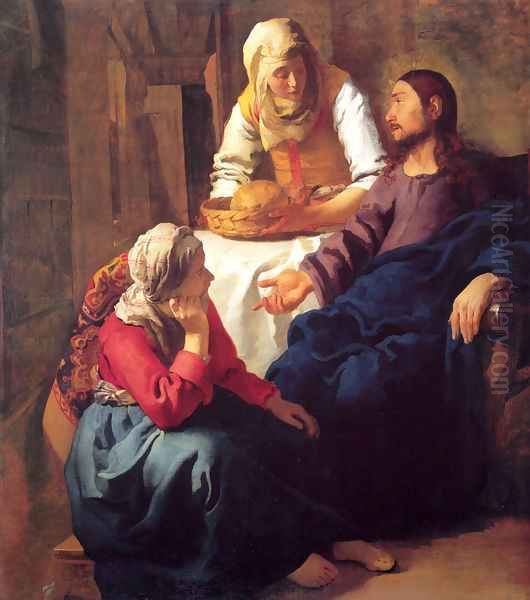
Details about Vermeer's artistic training are frustratingly scarce and speculative. No documents definitively name his teacher or teachers. Given his father's profession, it's plausible he received some initial guidance or connections through him. One prominent theory suggests he may have studied under Carel Fabritius, a highly talented pupil of Rembrandt who had moved to Delft in 1650. Fabritius's known work shows an interest in complex perspective and light effects, elements also central to Vermeer's art. However, Fabritius tragically died in the Delft gunpowder explosion of 1654, limiting the potential duration of any apprenticeship.
Another possibility is that Vermeer studied under Leonaert Bramer, a respected Delft painter of an older generation known for history paintings. Bramer was a Catholic, like Vermeer's future wife, and acted as a witness when Vermeer's future mother-in-law initially tried to prevent the marriage, suggesting a personal connection. Some stylistic elements in Vermeer's early, larger-scale history paintings, like Christ in the House of Martha and Mary, might show Bramer's influence. It's also possible Vermeer was largely self-taught, learning through observation, practice, and absorbing influences from the diverse art available in Delft.
The Delft Context and Artistic Milieu
Vermeer became a master in the Delft Guild of Saint Luke on December 29, 1653. Membership was essential for any artist wishing to work independently, sign paintings, take on pupils, or sell their work legally within the city. This registration marks the formal beginning of his professional career. He seems to have gained respect within the Guild relatively quickly, serving as its headman (hoofdman) four times, in 1662-1663 and 1670-1671, indicating esteem among his peers.
Delft in the mid-17th century was a vibrant artistic center, though perhaps overshadowed by Amsterdam or Haarlem. Vermeer worked alongside other notable painters. Besides the aforementioned Carel Fabritius and Leonaert Bramer, Pieter de Hooch was a significant contemporary active in Delft during the 1650s. De Hooch specialized in domestic interior and courtyard scenes, often featuring intricate perspectives and warm light. There are clear thematic and stylistic parallels between his work and Vermeer's genre paintings from this period, suggesting mutual influence or at least a shared interest in similar subjects and compositional challenges. Both artists excelled at depicting tranquil domesticity and the play of light within enclosed spaces.
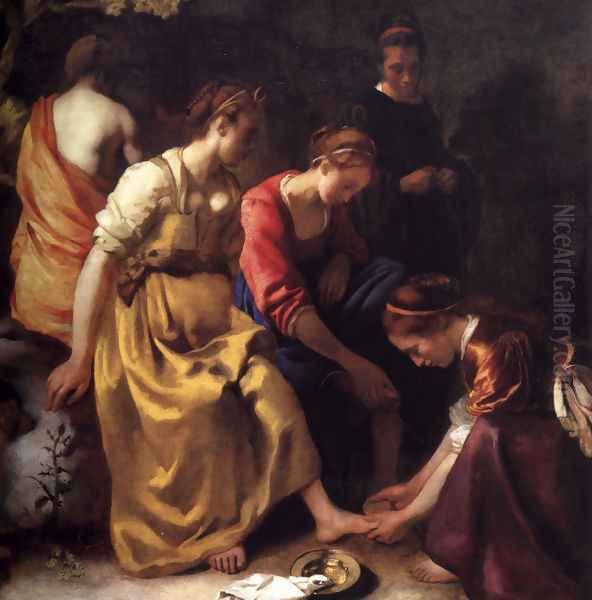
While direct interaction is unproven, Vermeer would certainly have been aware of major figures elsewhere in the Netherlands. The towering presence of Rembrandt van Rijn in Amsterdam defined much of Dutch art, though Vermeer's cool, precise style contrasts sharply with Rembrandt's dramatic chiaroscuro and expressive brushwork. If Fabritius was indeed his teacher, that provides an indirect link. He may also have been aware of the fijnschilders ("fine painters") of Leiden, such as Gerard Dou and Frans van Mieris the Elder, known for their highly detailed and polished small-scale genre scenes. Gerard ter Borch, active in Deventer, painted elegant interiors with figures clad in shimmering satin, a textural richness echoed in some of Vermeer's depictions of fabric. The influence of Utrecht Caravaggisti like Gerrit van Honthorst, known for dramatic lighting, might also be discerned in Vermeer's handling of light, perhaps filtered through earlier Delft painters or Fabritius. Landscape painters like Jacob van Ruisdael, though working in a different genre, represented the broader artistic excellence of the period. Other Delft contemporaries included Emanuel de Witte, famed for his church interiors, and history painter Paulus Potter (though he died young in 1654).
Artistic Style and Technique
Vermeer's style is renowned for its clarity, harmony, and extraordinary rendering of light and texture. He worked slowly and meticulously, which partly explains his small output. His technique involved applying paint in thin, smooth layers, often using expensive pigments, most notably ultramarine (derived from lapis lazuli) for blues and lead-tin yellow for bright, luminous yellows.
Mastery of Light: Light is arguably the central subject of many Vermeer paintings. He typically depicted light entering from a window on the left side of the composition, illuminating the scene with a soft, diffused radiance. He captured the subtle ways light reflects off different surfaces – the gleam on polished wood, the sheen on silk or satin, the porous texture of bread, the glint on metal or pearl. His use of pointillé – applying small dots or dabs of paint to suggest reflected light and texture, particularly on highlights – creates a shimmering, almost photographic effect, distinct from the blended finish of many contemporaries.
Color and Harmony: Vermeer possessed an exceptional sensitivity to color relationships. His palettes are often built around blues and yellows, balanced with subtle earth tones, whites, and grays. He achieved remarkable harmony and balance, creating scenes that feel both realistic and aesthetically composed. The intensity of his colors, particularly the vibrant ultramarine, often used for fabrics or tablecloths, adds richness without disrupting the overall tranquility.
Composition and Perspective: Vermeer's compositions are carefully constructed, often using geometric principles and a strong sense of order. Figures and objects are placed with precision within a clearly defined space, often a corner of a room. He frequently employed compositional devices like framing elements (curtains, doorways), leading lines (floor tiles), and strategically placed objects (maps, paintings-within-paintings) to create depth and guide the viewer's eye. His perspective is generally accurate, contributing to the convincing illusion of three-dimensional space.
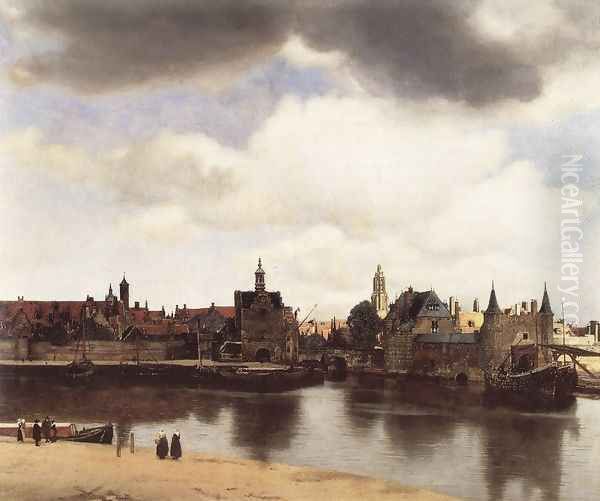
Realism and Serenity: While grounded in realism, Vermeer's paintings transcend mere depiction. They possess a profound stillness and intimacy, capturing moments of quiet contemplation or absorption. Figures are often engaged in simple domestic activities – reading a letter, playing music, pouring milk – seemingly unaware of being observed. This creates a sense of suspended time and invites the viewer into a private, contemplative world. The overall mood is one of serenity, order, and quiet dignity.
The Camera Obscura Debate: A long-standing debate concerns whether Vermeer used a camera obscura, an optical device that projects an image onto a surface, as an aid in composition and achieving his distinctive optical effects. Arguments in favor point to features like the pointillé highlights (resembling circles of confusion in unfocused projections), the slightly exaggerated perspective sometimes seen, and the overall photographic quality of light and focus. Proponents like artist David Hockney and physicist Charles Falco have strongly advocated this view. However, there is no documentary evidence of Vermeer owning or using such a device. Critics argue that his effects could have been achieved through keen observation and artistic skill alone, and that relying too heavily on the camera obscura theory diminishes his creative genius. It remains a fascinating, unresolved aspect of his technique.
Major Themes and Subjects
Vermeer's surviving oeuvre is dominated by interior genre scenes, typically featuring one or two figures in a domestic setting. Women are central figures in many of his most famous works, depicted engaged in activities like reading, writing letters, playing musical instruments (virginals, lutes, guitars), making lace, or performing household tasks. These scenes often explore themes of domesticity, contemplation, communication (letters), and the arts (music, painting).
Maps frequently appear on the walls in his interiors, perhaps reflecting Dutch global trade and exploration, or serving as compositional elements and symbols of the outside world contrasting with the intimate interior. Paintings-within-paintings are another recurring motif, sometimes offering commentary on the main scene or hinting at allegorical meanings.
While best known for these intimate interiors, Vermeer also produced a small number of other works. His early career included a few larger history paintings with religious or mythological subjects, such as Christ in the House of Martha and Mary and Diana and Her Companions. These works show influences from Italian and Utrecht painting but already display his characteristic sensitivity to light and composition.
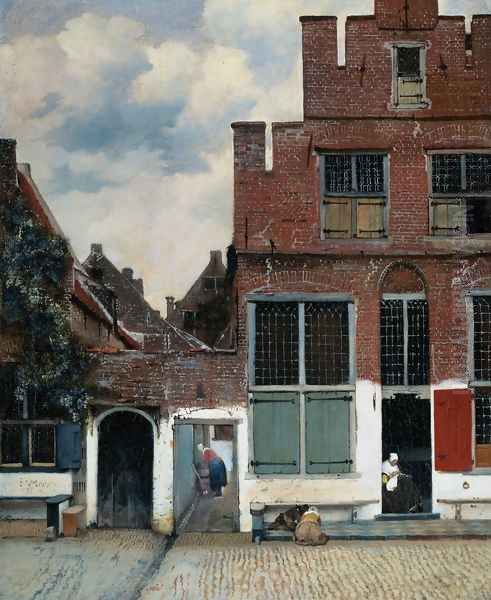
He also painted two extraordinary cityscapes of Delft, View of Delft and The Little Street. These are rare exceptions to his focus on interiors but are considered masterpieces of the genre. View of Delft, in particular, is celebrated for its atmospheric realism, detailed observation, and masterful rendering of light on water and architecture. The Little Street offers a more intimate, close-up view of typical Delft facades, capturing textures and daily life with quiet precision.
Some works carry clearer allegorical weight, such as Woman Holding a Balance, where a woman contemplates empty scales beneath a painting of the Last Judgment, inviting interpretations about weighing worldly versus spiritual values. The Art of Painting is perhaps his most complex allegorical work, depicting an artist (possibly a self-portrait seen from behind) painting a model personifying Clio, the muse of history, suggesting profound reflections on art, fame, and history itself.
Representative Masterpieces
Vermeer's small output contains numerous iconic works. Among the most celebrated are:
Girl with a Pearl Earring (c. 1665): Often called the "Mona Lisa of the North," this captivating portrait (or tronie – a study of expression or character type) shows a young woman looking over her shoulder towards the viewer. Her enigmatic expression, the simple dark background, the luminous pearl earring, and the exotic turban contribute to its timeless appeal and mystery. The masterful handling of light on her face and the moistness of her lips is extraordinary.
View of Delft (c. 1660-1661): This panoramic cityscape is renowned for its breathtaking realism and atmospheric depth. Vermeer captures the city across the Schie canal under a dramatic sky, with sunlight highlighting parts of the buildings while others remain in shadow. The detailed rendering of architecture, the reflections in the water, and the sense of calm make it one of the most famous cityscapes in art history.
The Milkmaid (c. 1658-1660): Depicting a robust kitchen maid pouring milk, this painting is celebrated for its powerful sense of presence and tactile realism. Vermeer masterfully renders the textures of the coarse bread, the earthenware jug, the streaming milk, and the woman's sturdy form. The use of pointillé on the bread and basket is particularly notable. It conveys the dignity of simple domestic labor.
The Lacemaker (c. 1669-1670): One of Vermeer's smallest paintings, it shows a young woman intently focused on her lacemaking. The shallow depth of field, with the foreground threads rendered slightly out of focus, draws attention to the woman's concentration and the delicate work of her hands. The intimate scale and quiet intensity are characteristic of Vermeer's best work.
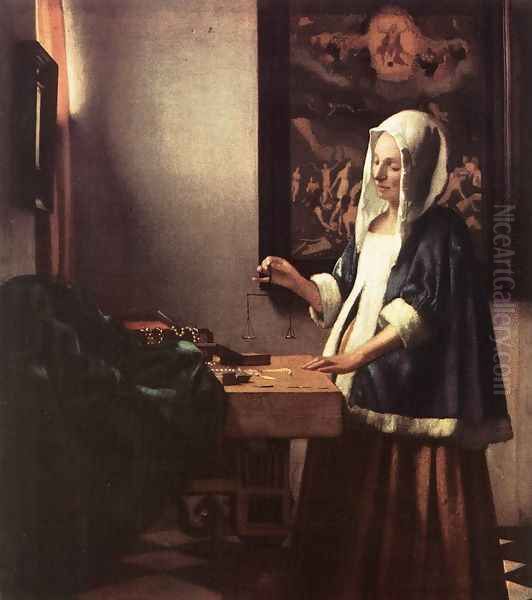
Woman Holding a Balance (c. 1664): This serene interior shows a woman standing before a table with jewelry scattered on it, holding an empty balance. Behind her hangs a painting of the Last Judgment. The scene is bathed in soft light, creating a contemplative mood. It is often interpreted allegorically, suggesting themes of judgment, moderation, and the weighing of spiritual versus material concerns.
The Art of Painting (c. 1666-1668): A larger and more complex work, likely holding personal significance for Vermeer (it remained in his possession until his death). It shows an artist painting a model dressed as Clio, the muse of history. The rich detail, the elaborate curtain pulled aside to reveal the scene, the map on the back wall, and the symbolic elements make it a profound statement about the nature and status of art.
Later Life and Financial Struggles
In April 1653, Vermeer married Catharina Bolnes, who came from a wealthier, Catholic family from Gouda. Her mother, Maria Thins, initially opposed the match, possibly due to Vermeer's Protestant background (though he likely converted to Catholicism shortly before or after the marriage) and perhaps his financial standing. They eventually reconciled, and Vermeer and his growing family moved into Maria Thins's spacious house on the Oude Langendijk in Delft around 1660. The couple had fifteen children, four of whom died in infancy.
Vermeer likely supplemented his income from painting by working as an art dealer, following in his father's footsteps after his death in 1652. He seems to have achieved moderate success for a period. However, his fortunes took a drastic downturn with the Rampjaar (Disaster Year) of 1672, when France under Louis XIV invaded the Dutch Republic. The ensuing economic collapse devastated the art market. Vermeer, who was supporting a large family, fell deeply into debt.
He struggled financially for the remaining years of his life. In a petition written by his wife after his death, she stated that due to the war and the inability to sell not only his own paintings but also those he dealt in, he had fallen into such "decay and decadence" and "frenzy" that he had gone "from being healthy to being dead in a day and a half." Johannes Vermeer died suddenly in December 1675, likely from a stress-related illness such as a stroke or heart attack, leaving Catharina and their eleven surviving children with significant debts.
The Enigma of Vermeer
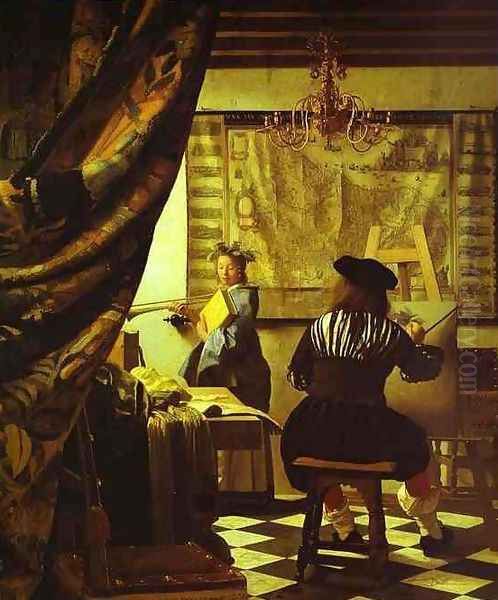
Several factors contribute to the enduring enigma surrounding Vermeer. His extremely limited output is unusual for a professional painter of the era. Did he destroy earlier works? Did he simply work incredibly slowly? Or have many paintings been lost? The meticulous technique suggests a slow pace, but the exact reasons remain unclear.
The almost complete lack of personal documents – no letters, diaries, or detailed contemporary accounts – makes reconstructing his personality, thoughts, or artistic intentions difficult. We know him primarily through official records (birth, marriage, guild membership, debts, death) and, of course, his paintings.
The question of his training persists. While Fabritius and Bramer are plausible candidates, the lack of definitive proof leaves room for speculation. His unique style seems to have emerged relatively fully formed after his early history paintings, without obvious transitional works.
The camera obscura debate adds another layer of mystery to his methods. While plausible, the extent of its use and its precise role in his creative process cannot be definitively determined. Did it help him achieve his unique vision, or was it merely a tool used occasionally for specific effects?
Finally, his relative obscurity during his lifetime and the subsequent two centuries is puzzling given the quality of his work. While appreciated by some local patrons and fellow artists, he never achieved the widespread fame of Rembrandt or even Gerard Dou. His limited output, confinement to Delft, and perhaps his focus on quiet, introspective scenes rather than grand historical or religious narratives may have contributed to this.
Rediscovery and Legacy
For nearly two hundred years after his death, Vermeer was largely forgotten by the wider art world. Some of his paintings were misattributed to other artists, such as Pieter de Hooch or Gabriel Metsu. The turning point came in the mid-19th century, largely thanks to the efforts of the French art critic and political journalist Théophile Thoré-Bürger. Writing under the pseudonym W. Bürger, Thoré-Bürger encountered Vermeer's View of Delft at the Mauritshuis in The Hague and was captivated. He embarked on a quest to find more works by this unknown master, traveling across Europe and meticulously documenting his findings.
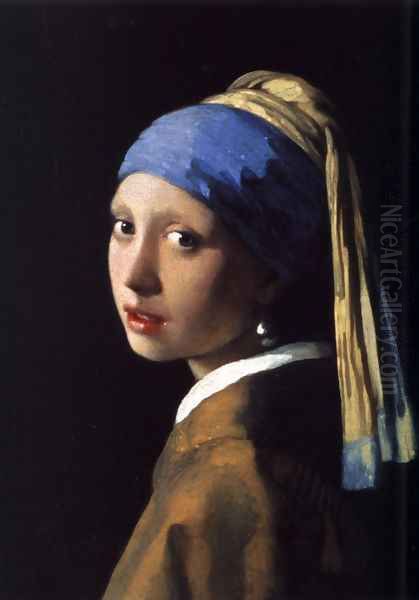
In 1866, Thoré-Bürger published a series of articles in the Gazette des Beaux-Arts, effectively resurrecting Vermeer's reputation. He cataloged many of the works known today and praised Vermeer's unique qualities – his handling of light, his color harmonies, his serene compositions. Thoré-Bürger's enthusiasm sparked a wave of interest among collectors, artists, and art historians.
Vermeer's style resonated with late 19th-century tastes, particularly with the Impressionists and Post-Impressionists, who admired his treatment of light and color, and his focus on everyday life. Artists like Auguste Renoir, Vincent van Gogh (who praised the palette in The Little Street), and later Salvador Dalí expressed admiration for his work. Marcel Proust famously featured Vermeer, particularly View of Delft, in his novel In Search of Lost Time.
Throughout the 20th century and into the 21st, Vermeer's stature has continued to grow. Major exhibitions dedicated to his work draw huge crowds. His paintings, particularly Girl with a Pearl Earring, have become cultural icons, reproduced endlessly and inspiring books, films, and plays. He is now universally recognized as one of the greatest painters of the Dutch Golden Age and indeed, of Western art history. His ability to transform simple domestic scenes into profound meditations on light, time, and human presence remains unparalleled.
Conclusion: The Enduring Appeal
Johannes Vermeer's journey from provincial obscurity to global fame is a testament to the enduring power of his art. Working meticulously in his Delft studio, he created a small but luminous body of work that captures the quiet beauty of everyday life with unparalleled sensitivity. His mastery of light, color, and composition allows viewers to step into the tranquil, ordered world of 17th-century Holland, yet his paintings possess a timeless quality that transcends their specific historical context.
The mysteries surrounding his life and methods only add to his allure. Was he a reclusive genius? A technical innovator using optical devices? A devout family man struggling against economic hardship? Perhaps he was all of these. What remains undisputed is the profound impact of his paintings. They invite contemplation, reward close looking, and offer moments of serene beauty in a bustling world. The "Sphinx of Delft" may keep some of his secrets, but the quiet magic of his art continues to speak eloquently across the centuries.